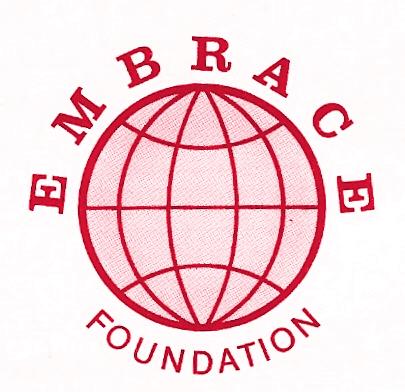IS IT POSSIBLE?
Deconstructing Nuclear Fission & Nuclear Waste
Deconstructing Nuclear Fission & Nuclear Waste


Bacteria could help clean groundwater contaminated by uranium ore
processing
Date:June 15, 2015
Source:Rutgers University
A strain of bacteria that "breathes" uranium may hold the key to cleaning up polluted groundwater at sites where uranium
ore was processed to make nuclear weapons.
A team of Rutgers University scientists and collaborators discovered the bacteria in soil at an old uranium ore mill in Rifle,
Colorado, almost 200 miles west of Denver. The site is one of nine such mills in Colorado used during the heyday of
nuclear weapons production.
The research is part of a U.S. Department of Energy program to see if microorganisms can lock up uranium that leached
into the soil years ago and now makes well water in the area unsafe to drink.
The team's discovery, published in the April 13, 2015 issue of PLOS ONE, is the first known instance where scientists have
found a bacterium from a common class known as betaproteobacteria that breathes uranium. This bacterium can breathe
either oxygen or uranium to drive the chemical reactions that provide life-giving energy.
"After the newly discovered bacteria interact with uranium compounds in water, the uranium becomes immobile," said Lee
Kerkhof, a professor of marine and coastal sciences in the School of Environmental and Biological Sciences. "It is no
longer dissolved in the groundwater and therefore can't contaminate drinking water brought to the surface."
Kerkhof leads the Rutgers team that works with U.S. Department of Energy researchers.
Breathing uranium is rather rare in the microbial world. Most examples of bacteria which can respire uranium cannot
breathe oxygen but often breathe compounds based on metals -- typically forms of solid iron. Scientists had previously
witnessed decreasing concentrations of uranium in groundwater when iron-breathing bacteria were active, but they have
yet to show that those iron-breathing bacteria were directly respiring the uranium.
While the chemical reaction that the bacteria perform on uranium is a common process known as "reduction," or the act of
accepting electrons, Kerkhof said it's still a mystery how the reduced uranium produced by this microorganism ultimately
behaves in the subsurface environment.
"It appears that they form uranium nanoparticles," he said, but the mineralogy is still not well known and will be the subject
of ongoing research.
The Rutgers team was able to isolate the uranium-breathing bacterium in the lab by recognizing that uranium in samples
from the Rifle site could be toxic to microorganisms as well as humans. The researchers looked for signs of bacterial
activity when they gradually added small amounts of dissolved uranium at the right concentration back to the samples
where uranium had become immobilized. Once they found the optimal uranium concentrations, they were able to isolate
the novel strain.
Exactly how the strain evolved, Kerkhof said, "we are not sure." But, he explained, bacteria have the ability to pass genes to
each other. So just like bacteria pick up resistance to things like antibiotics and heavy metal toxicity, this bacterium "picked
up a genetic element that's now allowing it to detoxify uranium, to actually grow on uranium." His research team has
completed sequencing its genome to support future research into the genetic elements that allow the bacterium to grow on
uranium.
What Kerkhof is optimistic about is the potential for these bacteria to mitigate the specific groundwater pollution problem in
Rifle. Scientists at first expected the groundwater to flush into the Colorado River and carry the dissolved uranium with it,
where it would get diluted to safer levels. But that hasn't happened. Other potential methods of remediation, such as digging
up the contaminated soil or treating it with harsh chemicals, are thought to be too expensive or hazardous.
"Biology is a way to solve this contamination problem, especially in situations like this where the radionuclides are highly
diluted but still present at levels deemed hazardous," said Kerkhof. If the approach is successful, it could be considered for
other sites where uranium was processed for nuclear arsenals or power plant fuel. While the problem isn't widespread, he
said there's potentially a lot of water to be concerned about. And the problem could spread beyond traditional places such
as ore processing sites.
"There is depleted uranium in a lot of armor-piercing munitions," he said, "so places like the Middle East that are
experiencing war could be exposed to high levels of uranium in the groundwater."
Story Source:
The above post is reprinted from materials provided by Rutgers University. The original item was written by Carl Blesch.
Note: Materials may be edited for content and length.
Journal Reference:
Nicole M. Koribanics, Steven J. Tuorto, Nora Lopez-Chiaffarelli, Lora R. McGuinness, Max M. Häggblom, Kenneth H.
Williams, Philip E. Long, Lee J. Kerkhof. Spatial Distribution of an Uranium-Respiring Betaproteobacterium at the Rifle, CO
Field Research Site. PLOS ONE, 2015; 10 (4): e0123378 DOI: 10.1371/journal.pone.0123378
Although the following commentaries are from SCIENCE magazine published by the American Association for the
Advancement of Science with regard to spent nuclear waste and do not address the deconstruction of the nuclear chain
reaction, this is an important consideration. The recent news that China is going to reuse their nuclear rods repeatedly,
moving them to new reactors for many years to come is a remarkable move forward for humanity and the environment.
Embrace Editors
Nuclear Waste
Thorium’s Potential
IN THEIR POLICY FORUM “NUCLEAR WASTE: Knowledge waste?” (13 August, p 762), E.A. Rosa et al. overlook a
possible solution to nuclear waste: alternative fuel cycles, particularly the Thorium Fluoride, Molten-Salt Reactor (Thorium
MSR).
The use of Thorium as a fertile reactor input has the potential to greatly reduce high-level reactor wastes (1). (Thorium-232
is bred by the reactor’s internal neutron flux to Uranium-233, which is then efficiently fissioned by another neutron. A small
proton accelerator can also do the breeding. U233 is unnatural, because of a short half-life, but fissions more easily than
the U235 used in typical reactors.) Adopting the MSR would further reduce waste by orders of magnitude (1,2) - there is not
solid fuel or refueling waste, and all fissiles entering the salts are consumed. …
ALEXANDER CANNARA
TO READ THE REST OF THIS COMMENT: Science - AAAS
RESPONSE TO ALEXANDER CANNARA
CANNARA RECOMMENDS THE ADOPTION OF the Thorium Molten-Salt Reactor. We urge caution. The nuclear industry
has never fully realized safety and other promises, Grimes and Nuttall (1) explain that the fissile Uranium-233 produced by
the slow neutron capture of Thorium-232 “is difficult to extract and handle, because it is produced together with other highly
radioactive isotopes, and the performance of thorium fuels is not well understood. The proliferation resistance credentials of
the thorium fuel cycle deserve greater scrutiny but appear promising.” These are precisely the kinds of uncertainties and
risks that should be part of a wider public discourse about energy choices. …
Eugene A. Rose, Seth P. Tuler, Baruch Fischhoff, Thomas Webler, Sharon M. Friedman, Richard E. Sclove, Kristin
Shrader-Frechette, Mary R. English, Roger E. Kasperson, Robert L. Goble, Thomas M. Leschine, William Freudenburg,
Caron Chess, Charles Perrow, Kai Erickson, James F. Short
TO READ THE REST OF THIS RESPONSE: SCIENCE AAAS

Embrace Foundation Retreat Center
Embrace.Foundation (skype messaging) - 011+1+212.675.4500 (New York)
Click to Email Us
Embrace Foundation is a non-profit,
educational foundation set up to create
better understanding between people of
different religions, cultures, traditions and
world philosophies.
Embrace Foundation works to bring leaders
and scholars of world-wide religions,
cultures and philosophies together by
sponsoring forums, seminars, lectures and
developing an international exchange
program. Embrace Foundation is particularly
concerned with reaching the world public
through the media.
Purpose

Donations
Embrace Foundation is an all volunteer
organization. All donations go directly to
programs.
Embrace Foundation does not and has
never given permission to any outside
organization to solicit or receive
contributions on our behalf.
All donations should be made to Embrace
Foundation only via Paypal or by mail. All
donations are tax deductible. A receipt will
be emailed to you. Please click on the Pay
Pal link below to Donate.


Embrace Humanity

Thank you for making a donation.
Embrace Foundation International
- Great Visions TV
- Inspirations
- Media
- Possibilities
- Astrophysics, Quantum Physics & The Nature of Reality
- Deconstructing Nuclear Fission & Nuclear Waste
- Defense Industry as Community Builders
- Defense Industry As Energy Providers
- Global Water Shortages
- Innovative Technology
- Intelligent Communities & Development
- Pentagon & Non-Western Nations
- Recreating
- Resource Based Population
- Sharing Community Resources
- Protecting Human Rights
- Spiritual Ecology
- Syria
- Write to Us

